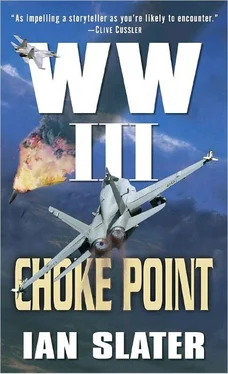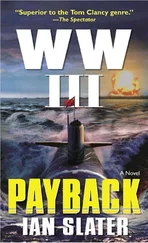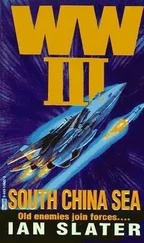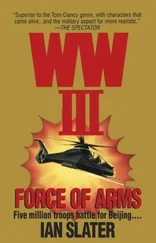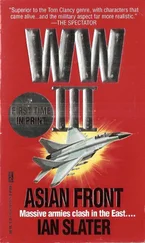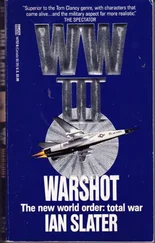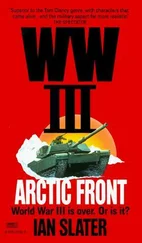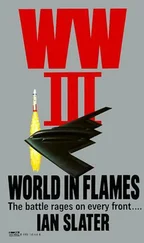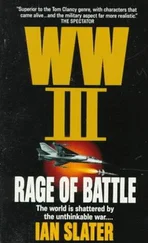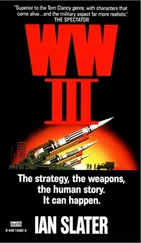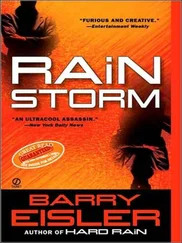Northeast Pacific
On the far side of the world, moving from “quiet” to “ultraquiet,” the 377-foot-long Virginia-class USS Utah , the fastest and deadliest attack submarine ever built, was speeding beneath gray seas at sixty miles an hour when one of the four sonar operators in its blue-lit control room spotted an anomaly on his green waterfall screen.
“Contact on surface,” he said. “Bearing zero six three degrees. Fifteen thousand yards.”
The attack sub’s sonar library computer, containing the acoustic signature of every ship afloat, immediately printed: HOSTILE BY NATURE OF SOUND.
“Officer of the deck,” ordered Captain John Rorke. “Man battle stations.”
“Man battle stations, aye, sir.”
The “G-sharp” sounded throughout the Utah , and the 134 officers and men scrambled to assigned positions, their Vibram-soled sneakers barely audible, all nonessential equipment quickly “powered down.” The deep, gurgling sound of torpedo tubes flooding could be heard by some as the plotting officer’s computer crunched the numbers — water salinity, sea temperature, angle on the bow, and the other myriad variables necessary to solve the complex mathematical equations that preceded firing the sub’s Advanced Capability Mark 48 torpedoes. The torpedomen removed the WARNING WARSHOT LOADED cards from the notification slots of the two tubes selected for firing. Each tube housed a sleek, black-nosed, 1.5-ton Mark 48 “fish” capable of running at sixty miles per hour for a distance of twenty miles. The warhead was designed not to hit the target dead on, but below an enemy’s keel, in order to create a vacuum into which the doomed ship would collapse and sink within minutes.
“Steer course zero six five,” said the weapons officer.
“Very well, Weapons,” Captain Rorke replied.
The plotting officer checked the proposed vectors on his computer chart. “Shot looks good on plot.”
“Very well, Plot,” acknowledged Rorke. “Officer of the deck, secure for battle stations.”
“Secure for battle stations, aye.”
Alicia Mayne, the lone civilian scientist aboard, sat on the flip-down stool just outside the entrance to the Combat Control Center. She was struck once again by the Navy’s ritual of dogged repetition, designed to avoid the kind of catastrophic error that had lead to the USS Greeneville ’s accidental sinking of the Japanese trawler Ehime Maru off Hawaii in February 2001. The board of inquiry investigating the Greeneville ’s grievous mistake had pointedly noted that civilians aboard the sub had crowded the boat’s Combat Control Center, and so Alicia was now careful to stay out of the way. She enjoyed simply listening to the vocal confirmation of each order. It evoked a sense of teamwork honed under all kinds of conditions. It was reassuring. And she enjoyed watching Captain Rorke, a lean six-footer — in his early thirties, she guessed — so absorbed by his task that he was oblivious to her presence. Or perhaps so disciplined that he knew she was there but was able to focus entirely on his job anyway.
“Prepare to come to periscope depth,” commanded Rorke.
“Prepare to come to periscope depth, aye.”
Seconds later, Rorke ordered, “Officer of the deck, proceed to periscope depth.”
“Proceed to periscope depth, aye.” Everyone was tense; battle stations could last for a minute or an hour. Either way, they were approaching the moment of truth: Was it a drill or would it be an actual firing? Only the navigating officer and the captain knew for sure. In the torpedo room an auxiliaryman bet ten bucks it was a drill.
David Brentwood hand signaled his five DA commandos forward again; the voices he thought he’d heard were gone. His men had all heard the phantom sounds before on other missions. The wind moaning through the Hindu Kush could play on the imagination, a fact well known for a hundred years by the British regiments who had tried to pacify the wild Afghani tribesmen.
Jam Hassim, with his beloved Remington pump-action at the ready, moved up, but he wasn’t happy. There hadn’t been any al Qaeda guards posted at the cave’s entrance. Then again, why should there be? It was a top secret operation, and the commandos’ fast rope infiltration had gone by the book, the noise of the chopper only transitory — by now the most common sound in the war against terror. Besides, the fact that there were no guards could mean that the cave was deserted. The heat signature the team had seen through the NVGs at the mouth of the cave could be hours old, heat ghosts of the kind that remained even after a parked car had left the parking lot, its residual infrared signature like a mirage on a hot day — still extant, though invisible to the naked eye. And Jam knew how many times the Special Forces had been fed rumor rather than hard intelligence because of the now retired CIA boss Admiral Stansfield Turner’s obsession with signal intelligence and other gizmology, as his archcritic General Freeman had repeatedly pointed out to the Pentagon. Instead of cultivating more human intelligence, spies around the world, the CIA and other U.S. intelligence agencies had relied too heavily on satellite reconnaissance.
Afghanistan, for example, had only a handful of U.S. agents, unlike Britain, whose long colonial experience in the Near and Far East had yielded more informants. And most of the handful had been hunted down, caught, and tortured to death during the Taliban’s reign of terror before 9/11, when reliance on electronic eyes and ears had been able to yield only so much. Since 9/11 the situation been changing, but human spies took time to cultivate, train, and infiltrate.
Now, it struck Jam, as it had Brentwood up ahead, that they could well be on a wild goose chase. Whoever had been ensconced in the farthest recesses of the winding subterranean fissure was probably there only during one of the allied air strikes.
Through his NVGs, Brentwood, on point, discerned a perfectly straight thin white line a few inches above the cave. It passed from one side of this eight-foot-wide section to the other. It was high-tech in a low-tech environment — a photoelectric beam. His hand shot up again, and the other five commandos froze.
Good for Dave, Jam thought. Had he broken the beam, an alarm would have sounded. Al Qaeda and the Taliban belonged to the Stone Age, but bin Laden had taught them to go high-tech wherever possible, and he’d provided the funds. Then again, all allied Special Forces, including the Aussies and Brits, used such early warning devices, and Jam realized that if the cave hadn’t been abandoned, they might be closing on another allied SpecOp team taking temporary refuge from the bitter cold. Bad intel? No. He dismissed the thought as wild surmise. It couldn’t be.
The cave now narrowed to a six-foot-wide, five-foot-high tunnel that split into a Y. The six commandos, dividing into two three-man squads, bent low, crouching over their weapons as they proceeded farther into the tar-black interior. Brentwood had elected to lead his strike trio into the left spar of the Y, remembering that the satellite heat signature pictures suggested the left-hand fork had been bleeding heat. Jam’s trio, including a rifleman, Julio Sanchez, took the right branch of the Y, which Jam guessed might soon peter out. He was right. He signaled his team to backtrack to join the other squad, which meant he was now tail-end Charlie, with Brentwood still on point.
There were fourteen minutes to go when Brentwood glimpsed a baseball-size white blur coming at him from the left flank. “Down!” he yelled, pivoting, swinging his HK and unleashing a burst of 9mm fire. The ear-dunning crash of the grenade’s explosion, its purplish white cross combining with the fiery tongue from his weapon, “bloomed out” his NVGs, the white on white temporarily blinding him as his HK sent red-hot rock fragments ricocheting off the cave’s walls, over his five prostrate comrades. Three commandos returned fire, pocking the Y’s left branch, where Jam now saw a clutch of terrorists.
Читать дальше
